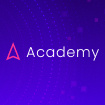Organizations that incorporate foresight practices achieve 33% higher profitability and 200% greater growth than their peers (McKinsey, 2021). Despite these significant advantages, many companies struggle to fully embrace foresight and futures thinking due to the inherent uncertainty and cultural shift required.
Foresight is crucial for navigating today’s complex business landscape, yet traditional methods often miss deeper insights by focusing solely on major trends. To overcome these limitations, McKinsey & Company has introduced the Design x Foresight Approach, blending design thinking with strategic foresight. This innovative methodology empowers organizations to go beyond conventional trends, fostering continuous innovation and proactive strategy development.
With the Design x Foresight Approach, businesses can anticipate changes, adapt quickly, and maintain a competitive edge. We spoke with Steven Fisher, Innovation Leader and Design Futurist at McKinsey, to explore this methodology and its transformative impact on corporate strategy. This article delves into the approach, its application, and the significant benefits it offers to companies ready to embrace the future.
What is Design x Foresight?
The "Design x Foresight Approach" is an innovative methodology that combines the principles of design thinking with strategic foresight. This hybrid approach enhances an organization's ability to anticipate future trends, create visionary strategies, and make informed decisions that align with potential future scenarios.
By integrating design thinking, which focuses on empathy, creativity, and user-centered solutions, with strategic foresight, which involves analyzing trends and signals to forecast multiple possible futures, organizations can better navigate uncertainty and complexity. This approach employs techniques such as design fiction and speculative prototyping to make future scenarios more tangible and relatable, facilitating better communication and engagement across the organization. The ultimate goal is to create a proactive, flexible strategy that prepares organizations to thrive in various potential futures.

Plurality of futures
A key element of the Design x Foresight Approach is recognizing that there are multiple possible futures rather than a single predetermined outcome. This concept acknowledges that different people and organizations may experience the future in vastly different ways, depending on their circumstances and decisions. By considering a range of potential futures, organizations can better prepare for various scenarios, enhancing their strategic flexibility. This approach allows businesses to create more resilient strategies, as they are not fixated on one predicted outcome but are instead ready to adapt to whatever changes may come.
How to apply Design x Foresight
Applying the Design x Foresight Approach involves several key steps that ensure a comprehensive and practical integration of foresight and design thinking into an organization’s strategy.
1. Democratizing futures thinking
One of the primary goals is to make futures thinking accessible to all members of the organization. This involves educating employees at all levels about foresight concepts and providing them with tools to apply these ideas in their daily work. By democratizing futures thinking, organizations can foster a culture where everyone contributes to anticipating and shaping the future. This approach parallels the widespread adoption of design thinking, which has empowered many organizations to solve problems creatively and collaboratively.
2. Integration into corporate culture
For the Design x Foresight Approach to be effective, it must be deeply embedded into the organization's culture. This means moving away from the notion that innovation is the responsibility of a single individual or department. Instead, innovation should be an organic part of the work and culture, allowing every team member to contribute. Embedding foresight into the corporate culture requires leadership commitment, continuous education, and the establishment of processes that encourage foresight-driven decision-making.
3. Collaborative and inclusive methods
The approach emphasizes the importance of collaboration across different functions and levels within the organization. Engaging diverse perspectives ensures that strategies are robust and comprehensive. Techniques such as cross-functional workshops, foresight sprints, and scenario planning sessions can be used to bring together various stakeholders to explore and discuss future scenarios. This collaborative approach helps build a shared vision of the future and align efforts toward common goals.
4. Utilizing backcasting
Backcasting is a critical technique in this approach. It involves starting with a desired vision—5, 10, or even 20 years in the future—and working backward to identify the steps needed to achieve that vision. This method helps organizations create actionable pathways toward their future goals, ensuring that current actions are aligned with long-term objectives. By mapping out the necessary milestones and decisions, backcasting bridges the gap between visionary thinking and practical implementation.
Use ITONICS Roadmaps for backcasting by starting with a desired future vision and working backward to identify key milestones and actions needed to achieve that vision. Collaborative and interactive, ITONICS Roadmaps allow you to build and backcast multiple plausible futures along clear and realistic timelines. Create actionable strategies, align current efforts with long-term goals, and ensure a systematic yet agile pathway to success.
5. Employing design fiction and speculative prototyping
To make future scenarios more tangible and relatable, organizations can use design fiction and speculative prototyping. These techniques involve creating narratives and prototypes that illustrate potential futures, making it easier for stakeholders to understand and engage with these concepts. By visualizing and experiencing possible futures, organizations can better prepare for and shape them.
6. Continuous learning and adaptation
Finally, the Design x Foresight Approach requires continuous learning and adaptation. The future is dynamic and ever-changing, so organizations must regularly update their foresight activities and remain flexible in their strategies. This involves monitoring trends, reassessing assumptions, and being ready to pivot as new information and opportunities arise.
By following these steps, organizations can effectively apply the Design x Foresight Approach, enhancing their ability to anticipate future trends, create innovative strategies, and make informed decisions that position them for long-term success.
The impact of Design x Foresight
The Design x Foresight Approach, as championed by McKinsey, is a powerful methodology for modern organizations. It combines the best of design thinking and strategic foresight to create a proactive, innovative, and resilient organizational culture. By democratizing future thinking and embedding it into corporate culture, companies can navigate the complexities of the future with confidence and agility.
Enhanced decision-making
The Design x Foresight Approach helps organizations anticipate future trends and explore various scenarios, leading to more informed and proactive decisions. This reduces risks and capitalizes on emerging opportunities, ensuring that decisions align with long-term goals and are resilient to future changes. By understanding potential futures, organizations can better navigate uncertainties and make confident choices.
Increased innovation capacity
This approach encourages cross-functional collaboration and inclusive participation, empowering employees at all levels to contribute ideas. It ensures diverse perspectives are considered, driving creative and effective solutions. By identifying overlooked areas, organizations can achieve breakthrough innovations and maintain a competitive edge in a rapidly changing market. This continuous influx of fresh ideas enhances the organization’s adaptability and growth potential.
Proactive strategy development
The Design x Foresight Approach enables proactive strategy development by using techniques like backcasting. Organizations start with a future vision and work backward to identify necessary steps, aligning current actions with long-term objectives. Design fiction and speculative prototyping help visualize potential futures, making it easier to plan and adapt. This results in improved strategic flexibility and resilience, maintaining a competitive advantage.
Harnessing the power of the ITONICS Innovation OS
The ITONICS Innovation OS is instrumental in helping organizations tackle the challenges of foresight and futures thinking. By offering a comprehensive platform for signals scouting, trend analysis, and scenario planning, ITONICS seamlessly integrates continuous foresight into strategic planning and corporate innovation.
With automated monitoring to streamline environmental scanning, ITONICS addresses a major obstacle in conducting effective foresight. Steven Fisher states, “One of the biggest challenges with futures work is trying to find the right trends in the signals, doing the good old-fashioned desk work to bring the themes and actually have the right conversations.” By infusing AI into foresight, ITONICS steers scouts, foresight managers, and decision-makers toward meaningful insights, impactful drivers of change, and promising opportunities—faster and more accurately.
ITONICS connects foresight intelligence to innovation projects and portfolios, allowing organizations to quickly validate, pivot, and reprioritize according to evolving customer needs. The platform fosters a culture of innovation by promoting cross-functional collaboration and democratizing access to foresight tools and methodologies. Embracing ITONICS Innovation OS equips businesses to anticipate and navigate future challenges effectively, securing a competitive edge in an ever-evolving market.










